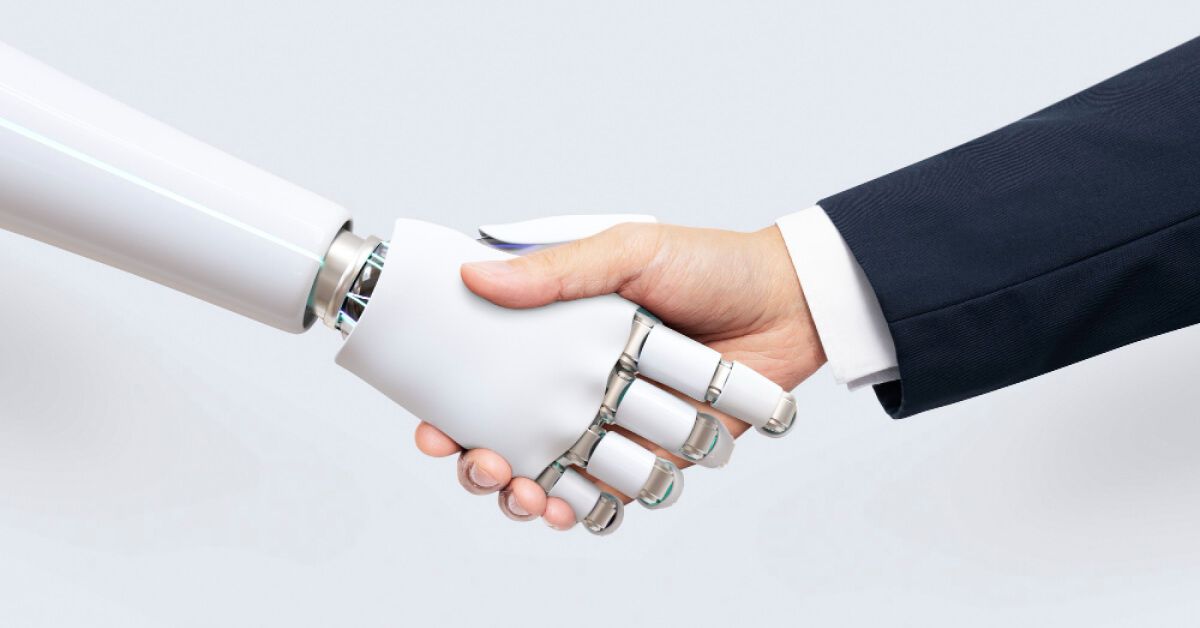10 Examples of innovation in the workplace every forward-thinking company needs

Let’s be honest—“innovation” gets tossed around more than office stress balls these days. But behind the buzzword lies a real game-changer. Innovation is what turns "that’s how we’ve always done it" into "why didn’t we try this sooner?" Take a team, for example. When support reps started using AI-powered chat summaries to cut ticket response times in half, it wasn’t just tech—it was transformation.
Innovation isn’t just about fancy tools or big budgets. It’s about fresh thinking, bold moves, and the freedom to question the status quo. In today’s fast-paced work culture, standing still is basically moving backward. Your team doesn’t need a ping-pong table to feel inspired—they need a culture where new ideas are welcomed, tested, and celebrated.
In this blog, we’re diving into real, practical examples of innovation in the workplace that have made waves—and how you can spark that same magic with your own crew.
What is innovation in the workplace?
Innovation in the workplace refers to the implementation of new ideas, processes, technologies, or strategies that improve how work gets done. It’s not limited to product development or tech—it includes streamlining workflows, enhancing team collaboration, solving operational inefficiencies, and creating better customer or employee experiences. At its core, workplace innovation is about identifying areas that can be improved and applying creative, effective solutions.
This could mean automating repetitive tasks, adopting flexible work models, or introducing new training methods that boost employee performance. It’s also about encouraging a mindset where employees feel empowered to suggest improvements and challenge outdated practices.
Innovation isn't confined to large-scale change. It can be incremental—like switching to a more intuitive project management tool—or transformational, such as overhauling a company’s service model. In both cases, the goal is the same: to add value, increase efficiency, and stay competitive.
Ultimately, innovation in the workplace is a strategic tool that enables organizations to adapt, grow, and thrive in a constantly evolving environment.
Importance of workplace innovation

- Innovation helps businesses stay ahead of competitors by adopting new technologies, processes, and strategies that respond to market changes.
- Streamlining operations through innovative practices reduces waste, optimizes workflows, and boosts productivity across teams.
- A culture of innovation motivates employees by encouraging them to contribute ideas and be part of the company’s growth, leading to higher job satisfaction.
- Innovation creates an environment where employees can think creatively, tackle challenges, and find better solutions, benefiting both individual performance and company outcomes.
- By innovating in products, services, or customer experiences, businesses meet evolving customer needs, leading to higher satisfaction and loyalty.
- Companies known for their innovative culture draw top talent, and employees are more likely to stay in an organization where they can grow and make an impact.
- Innovation ensures a company is adaptable, scalable, and resilient, setting the foundation for sustained success and future opportunities.
The link between innovation, employee engagement, and retention
When companies invest in organizational innovation, it does more than boost performance—it deeply impacts how engaged and committed employees feel. By challenging the status quo and enabling people to be part of innovation projects, businesses unlock long-term retention.
- Increased employee motivation: When a company embraces innovation, employees feel more motivated to contribute, knowing their innovation ideas for work are valued and that they are part of something forward-thinking. Innovation challenges, innovation partnerships, and efforts to encourage cross functional collaboration between different departments fuel knowledge sharing and activate collective intelligence—empowering every employee to play a key role in driving progress.
- Empowerment through creativity: An innovative work environment allows employees to take ownership of projects, encouraging creativity and problem-solving. When organizations are committed to embracing innovation and actively support innovation, employee ideas are more likely to be heard and implemented. This drives stronger innovation performance and creates a culture where innovation thrives, fostering a deep sense of accomplishment and job satisfaction.
- Higher job satisfaction: Providing employees with opportunities to experiment and implement new ideas boosts their overall satisfaction, leading to a stronger connection to their roles. When companies recognize innovation as part of strategic initiatives and corporate responsibility, they empower employees to improve existing processes, which in turn positively impacts productivity and fosters a culture of ownership and engagement.
- Stronger retention: Employees are more likely to stay with a company that prioritizes innovation, as it promotes ongoing improvement and encourages innovative behaviors across teams. By aligning with emerging trends and offering company recognition for fresh thinking, organizations boost overall job satisfaction and create a future-focused environment where employees feel valued and inspired to grow.
- Attracting top talent: A strong innovation culture attracts skilled professionals who thrive in dynamic environments where innovative ideas are embraced. By enabling cross functional collaboration through collaboration tools and idea management systems, companies support employees in bringing creativity into their personal and professional lives—making them feel valued, inspired, and empowered to make meaningful contributions from day one.
- Job security and long-term growth: Innovation signals a company’s adaptability and commitment to remaining competitive, reassuring employees about their long-term job security. Innovative companies that foster an innovative culture consistently generate fresh ideas, implement innovative ideas, and maintain a strong competitive advantage—creating a stable environment where employees can grow, thrive, and contribute meaningfully to long-term organizational success.
Types of innovation in the workplace

Innovation comes in many forms, each focusing on different aspects of a business. From products to culture, here are the key types of innovation that drive workplace transformation:
- Product innovation: This involves developing new products or improving existing ones to meet customer demands or explore new market opportunities. It could mean creating a more efficient version of an existing product or designing something entirely new.
- Process innovation: This focuses on improving internal processes to boost efficiency, reduce costs, and enhance overall performance. It includes streamlining workflows, automating repetitive tasks, or rethinking supply chain management.
- Cultural innovation: This type of innovation is about reshaping an organization’s values, attitudes, and behaviors. It encourages a culture of collaboration, creativity, and inclusivity, ensuring employees are empowered to contribute and innovate.
- Technological innovation: This refers to adopting or developing new technologies to improve how work is done. It might involve implementing AI, machine learning, or new software tools to enhance productivity, decision-making, or customer service.
- Workplace environment innovation: This is the redesign or restructuring of the physical or virtual workspace to improve employee well-being and productivity. It could include flexible working arrangements, open-office designs, or a better work-life balance approach.
- Business model innovation: Involves changing the way a company creates, delivers, and captures value. This might include shifting from a product-based to a subscription model or introducing new revenue streams.
- Service innovation: This is the introduction of new services or improvements in the way services are delivered to customers, aiming to enhance customer satisfaction and loyalty.
Benefits of an innovative workplace
Leveraging collaboration tools and idea management systems to generate innovative ideas helps modernize business models and build a lasting competitive advantage.
- Increased productivity: Innovative solutions streamline processes and reduce inefficiencies, allowing employees to focus on high-value tasks and deliver better results in less time.
- Enhanced employee engagement: When employees are encouraged to contribute ideas and try new approaches, they feel more involved and motivated, leading to higher job satisfaction.
- Attraction of top talent: Companies that prioritize innovation are seen as forward-thinking and dynamic, making them more attractive to skilled professionals seeking growth opportunities.
- Improved problem-solving: An innovative workplace fosters creative thinking and collaboration, helping teams tackle challenges and find effective solutions more quickly.
- Higher customer satisfaction: By continuously improving products, services, and experiences, innovative companies meet evolving customer needs, driving loyalty and long-term relationships.
- Increased profitability: Innovation leads to cost savings through process improvements and better resource management while also opening up new revenue streams and market opportunities.
- Adaptability and growth: An innovative culture ensures that a company can adapt to market changes, trends, and disruptions, providing the foundation for long-term success and scalability.
Challenges in implementing workplace innovation

From navigating innovation challenges to finding ways to encourage cross functional collaboration, organizations must overcome both cultural and operational roadblocks to make real progress.
- Resistance to change: Employees and management may resist innovation due to fear of the unknown or comfort with existing processes. Overcoming this inertia requires effective change management strategies and clear communication.
- Limited resources: Innovation often requires time, money, and expertise that may not be readily available. Smaller companies or teams with tight budgets may struggle to invest in new technologies or ideas.
- Lack of leadership support: Without strong support from leadership, innovation initiatives can fail. Leaders need to be advocates for change, providing the necessary resources and fostering a culture that encourages experimentation.
- Inadequate skills or training: Employees may lack the skills needed to implement new technologies or strategies. Investing in training and development is essential to ensure that the workforce can adapt to new ways of working.
- Risk of failure: Innovation involves trial and error, and some initiatives may not work out as planned. The fear of failure can prevent teams from taking risks, limiting creativity and progress.
- Cultural barriers: A company’s existing culture may not be conducive to innovation. A hierarchical or rigid structure can stifle creativity and discourage employees from proposing new ideas.
- Short-term focus: Companies often prioritize immediate results over long-term innovation efforts, making it difficult to implement sustainable, forward-thinking changes.
Skills needed to be innovative at work
Being innovative at work requires a combination of technical, creative, and interpersonal skills. These skills empower employees to think outside the box, collaborate effectively, and implement new ideas that drive change. Here are seven key skills for innovation workspace:
- Creative thinking: The ability to generate original ideas and solutions. Creative thinkers look at problems from different angles and challenge conventional approaches to find new opportunities.
- Problem-solving: Innovation often starts with identifying problems. Strong problem-solving skills help employees break down complex issues and design practical, effective solutions.
- Adaptability: Innovation requires flexibility in thinking and actions. Employees must be able to adjust quickly to new tools, technologies, or changes in direction without losing focus or productivity.
- Collaboration: Working with others is crucial for innovative thinking. Collaboration skills enable employees to share ideas, pool resources, and build upon each other’s strengths to drive collective success.
- Risk-taking: Innovation involves experimentation and stepping into the unknown. Employees who are willing to take calculated risks, learn from failure, and embrace uncertainty are often the ones who drive meaningful change.
- Communication: The ability to clearly convey new ideas and explain their value is essential for innovation. Effective communicators can rally others around new concepts and ensure alignment across teams.
- Continuous learning: Innovation thrives in environments where employees are committed to growing their knowledge and skills. Those who embrace continuous learning stay ahead of industry trends and bring fresh ideas to the table.
Top 10 real-world examples of innovation in the workplace

Innovation in the workplace is about more than just new products; it’s about improving how employees work, collaborate, and thrive. Here are 10 real-world examples of innovative workplace strategies driving change and boosting productivity.
- Hybrid work strategy: Many companies are adopting hybrid work models, allowing employees to split time between the office and home. This flexible arrangement offers better work-life balance, reduces commuting time, and helps attract a diverse range of talent from various locations.
- 4-day workweeks: Some organizations have embraced the 4-day workweek, aiming to improve productivity and employee well-being. By reducing workdays, companies see increased focus, lower burnout, and higher job satisfaction, as employees can better balance work and personal life.
- Cross-functional innovation labs: Cross-functional innovation labs bring together employees from different departments to collaborate on solving complex challenges. These labs foster creativity, encourage diverse perspectives, and accelerate problem-solving, often leading to breakthrough ideas that might not arise in siloed teams.
- Employee-led idea incubators: Instead of top-down decision-making, some companies have created employee-led idea incubators, where staff pitch new projects and innovations. This approach empowers employees, enhances engagement, and often uncovers valuable insights from those closest to the day-to-day operations.
- Flexible performance reviews: Traditional annual performance reviews are evolving into continuous feedback models, allowing for real-time assessments. Flexible performance reviews promote ongoing growth, provide regular feedback, and help align employees’ goals with company objectives, creating a more dynamic, transparent work culture.
- AI-powered recruiting: AI-driven recruiting tools help streamline the hiring process by quickly analyzing candidate data and matching the right skills to job requirements. This technology reduces bias, accelerates hiring, and ensures a better candidate experience by offering a more personalized process.
- Wellness-first workplace culture: Companies are shifting focus toward employee wellness, offering mental health programs, fitness incentives, and stress management resources. A wellness-first culture fosters better physical and mental health, reduces absenteeism, and creates a more supportive and productive work environment.
- DEI innovation teams: Diversity, equity, and inclusion (DEI) teams are driving innovation by creating more inclusive, diverse workplaces. These teams develop initiatives that encourage diverse perspectives, promote fair opportunities, and address unconscious biases, ultimately leading to a more innovative and equitable organization.
- Upskilling through gamification: Some companies are incorporating gamification into employee training, turning learning into a fun, engaging experience. By using game mechanics like points, levels, and rewards, companies encourage employees to develop new skills while enhancing motivation and knowledge retention.
- Automation of repetitive workflows: Organizations are leveraging automation tools to handle repetitive tasks like data entry or customer service inquiries. Automating these workflows frees up employees for more strategic, creative work, improves efficiency, and reduces the risk of human error in mundane processes.
Barriers to innovation in the workplace and how to overcome them
Innovation in the workplace is essential for growth, but several barriers can hinder progress. Understanding these obstacles and how to overcome them is key to fostering a culture of continuous improvement and creative problem-solving.
- Resistance to change: Employees may resist new ideas due to comfort with existing processes or fear of the unknown. To overcome this, leaders should foster a culture of open communication, highlighting the benefits of innovation and involving employees early in the process.
- Lack of resources: Innovation requires time, money, and expertise, which may not always be available. Companies can overcome this barrier by allocating dedicated budgets for innovation, investing in employee training, or seeking external partnerships to bring in necessary resources.
- Fear of failure: A risk-averse culture can stifle innovation, as employees may be hesitant to experiment. Encourage a “fail-forward” mentality where mistakes are viewed as learning opportunities. Recognize and celebrate creative attempts, even if they don’t succeed.
- Siloed departments: Innovation often requires collaboration across teams, but silos can limit communication and idea-sharing. Break down departmental barriers by promoting cross-functional projects, creating collaborative spaces, and encouraging interdepartmental brainstorming sessions.
- Short-term focus: Organizations may prioritize immediate results over long-term innovation. Leaders should balance short-term goals with long-term innovation strategies, aligning innovation initiatives with overall business objectives to ensure sustainable growth.
Best practices to encourage innovation and creativity in the workplace
Creating a culture of innovation and creativity requires intentional strategies and practices. Companies that successfully encourage new ideas are more adaptable and better positioned to solve challenges. Here are some best practices to cultivate innovation in the workplace:
- Foster an open environment: Encourage open communication where all employees feel comfortable sharing their ideas without fear of judgment. Open-door policies and regular brainstorming sessions can help generate creative solutions.
- Encourage collaboration: Innovation thrives when diverse minds come together. Promote cross-functional teams and collaborative workspaces where employees can exchange ideas and work on projects outside their usual roles.
- Provide time for creativity: Give employees dedicated time to work on innovative projects or explore new ideas. Google’s “20% time” is an example of allowing employees to spend part of their time on creative endeavors outside of their daily tasks.
- Support risk-taking: Create a culture where failure is seen as a learning opportunity. Encourage employees to experiment and try new approaches, knowing that calculated risks are a valuable part of the innovation process.
- Recognize and reward creativity: Acknowledge and celebrate innovative efforts, both big and small. This could be through formal awards, recognition programs, or even a simple thank-you for contributing new ideas.
- Invest in training and development: Provide employees with the tools, resources, and training they need to think creatively and stay updated on new technologies or industry trends.
- Lead by example: Leaders should demonstrate innovative thinking by encouraging new ideas, being open to change, and championing innovation within the organization.
How DEI efforts can lead to breakthrough innovation
Integrating Diversity, Equity, and Inclusion (DEI) efforts into the workplace fosters an environment ripe for breakthrough innovation. By embracing diverse perspectives and equitable practices, organizations can unlock creative potential and drive significant advancements.
- Diverse perspectives fuel creativity: Teams comprising individuals from varied backgrounds approach problems uniquely, leading to more innovative solutions.
- Inclusive environments enhance collaboration: When all voices are heard and valued, collaboration thrives, resulting in more effective problem-solving and idea generation.
- Equitable opportunities attract top talent: A commitment to DEI attracts a broader pool of candidates, enriching the talent base with diverse skills and viewpoints.
- Varied experiences lead to comprehensive solutions: Employees with different life experiences contribute to well-rounded solutions that address a wider array of challenges.
- Representation drives market growth: Organizations with diverse leadership are better positioned to understand and penetrate diverse markets, fostering growth.
- Inclusive cultures retain talent: Workplaces that prioritize DEI see higher employee satisfaction, leading to improved retention rates.
Embracing DEI not only cultivates a fair and just workplace but also serves as a catalyst for innovation, propelling organizations toward sustained success.
Success stories of companies cultivating innovative workplaces

Several companies have successfully cultivated innovative workplaces, leading to increased productivity, creativity, and overall business success. Here are a few innovation examples:
- Google: Google’s open culture encourages employees to spend 20% of their time on personal projects, leading to innovations like Gmail and Google News. This freedom fosters creativity and empowers employees to contribute ideas that align with the company's mission.
- 3M: Known for its innovative products, 3M has long promoted a culture of experimentation. The company’s “15% rule” allows employees to use 15% of their work time to explore new ideas, resulting in breakthroughs like the Post-it Note.
- Adobe: Adobe’s “Kickbox” program offers employees the tools and resources to turn their ideas into reality, with full support from leadership. This initiative has led to new products and innovations, fueling the company’s growth.
- Salesforce: Salesforce focuses on employee wellness and collaboration, using innovation labs to drive creativity. By fostering a culture of trust and openness, Salesforce has created a highly innovative and productive work environment.
How to measure innovation effectively in the workplace
Measuring innovation in the workplace is crucial to assess the impact of creative efforts and identify areas for improvement. Here are some effective ways to measure innovation:
- Track the number of new ideas: Monitor the number of ideas generated by employees through suggestion boxes, brainstorming sessions, or innovation platforms. A higher volume indicates an active, idea-driven culture.
- Monitor the implementation rate: Measure how many ideas are actually implemented or turned into projects. This reflects the organization’s ability to translate innovation into actionable results.
- Evaluate the impact on business outcomes: Assess how innovation affects key business metrics like revenue growth, market share, or customer satisfaction. Innovation should directly contribute to the company’s bottom line.
- Employee engagement surveys: Regularly survey employees to gauge their satisfaction with innovation initiatives and their level of involvement in the process. High engagement often correlates with a culture of innovation.
- Time to market: Track how quickly new ideas or products move from conception to launch. Shortening this cycle can indicate improved innovation processes.
- Collaboration metrics: Measure cross-functional collaboration and team participation in innovation efforts. High levels of collaboration often lead to breakthrough ideas.
By using these metrics, companies can assess the effectiveness of their innovation strategies and make data-driven decisions.
The role of the employee feedback platform in motivating employees to reach their full potential
Employee feedback platforms play a critical role in fostering a motivated and engaged workforce. By providing continuous, real-time feedback, these platforms help employees understand their strengths, areas for growth, and how their efforts align with company goals. Here’s how they contribute to employee motivation:
- Promotes ongoing development: Regular feedback helps employees track their progress and identify opportunities for personal and professional growth, fostering a culture of continuous improvement.
- Encourages recognition: Feedback platforms enable managers and peers to recognize accomplishments, boosting employee morale and reinforcing positive behaviors that drive performance.
- Supports transparent communication: These platforms create a channel for honest, constructive conversations, helping employees feel heard and valued. This transparency leads to greater trust and alignment with company objectives.
- Personalized goals and growth plans: With data-driven insights, feedback platforms help create tailored development plans, making employees feel more invested in their careers and motivated to reach their full potential.
- Strengthens employee engagement: When employees receive timely feedback, they’re more likely to stay engaged, feeling supported and confident in their abilities to contribute meaningfully to the organization.
By integrating feedback platforms, organizations can create a more motivated, high-performing workforce.
Blog summary
Innovation in the workplace is essential for growth and success. Companies that embrace creative ideas and foster a culture of continuous improvement can enhance productivity, boost employee morale, and drive business results.
- Innovation in the workplace is vital for organizational growth, improving productivity, and staying competitive. By fostering a culture of creativity, companies can unlock new opportunities and solve complex problems, ultimately driving business success and employee satisfaction.
- Embracing Diversity, Equity, and Inclusion (DEI) efforts plays a significant role in fostering breakthrough innovation. By leveraging diverse perspectives and promoting inclusive environments, companies can generate unique solutions and improve collaboration, leading to more innovative and effective outcomes.
- Companies like Google, 3M, and Adobe have shown how cultivating innovative workplaces can lead to transformative success. Their strategies include empowering employees to explore new ideas, invest in personal projects, and support creative thinking, resulting in ground-breaking products and services.
- Measuring innovation effectively is essential to assess its impact on business outcomes. Key metrics such as the number of ideas generated, implementation rates, and their effect on revenue growth and employee engagement provide valuable insights into the success of innovation efforts.
- Employee feedback platforms play a critical role in motivating employees by offering continuous, actionable feedback. These platforms promote personal growth, encourage recognition, and align employee goals with company objectives, driving higher engagement and helping individuals reach their full potential.
Conclusion
Fostering innovation in the workplace is essential for every forward-thinking company. From implementing flexible work strategies to embracing AI-powered tools, innovation drives productivity, engagement, and long-term growth.
CultureMonkey stands out as an employee feedback platform that helps businesses create a culture of innovation by continuously collecting and analyzing employee feedback. With its customizable surveys, pulse surveys, and engagement metrics, CultureMonkey empowers organizations to measure employee satisfaction and enhance their workplace culture.
By using data to act on innovative ideas and solve challenges, companies can stay competitive, build strong teams, and ultimately achieve sustainable success in today’s fast-paced world.
FAQs
1. What qualifies as ‘innovation’ in a company?
Innovation in a company refers to the implementation of new ideas, processes, products, or services that improve business performance. It can involve technological advancements, more efficient workflows, creative problem-solving, or new customer experiences. Innovation drives growth, boosts competitiveness, and enhances employee engagement, ultimately leading to a more adaptive and forward-thinking organization.
2. Why should companies care about their capacity to innovate?
Companies should care about their capacity to innovate because it drives growth, keeps them competitive, and improves efficiency. Innovation enables businesses to adapt to market changes, meet evolving customer demands, and differentiate themselves from competitors. A strong innovation capacity attracts top talent, boosts employee engagement, and ensures long-term sustainability in a rapidly changing business landscape.
3. How can companies encourage innovation and creativity in the workplace?
Companies can encourage innovation and creativity by fostering a supportive culture where employees feel safe to share ideas without judgment. Offering resources like time for personal projects, promoting cross-team collaboration, and providing recognition for creative contributions also help. Additionally, companies can invest in training and development programs to continuously build employees' skills and creative thinking capabilities.
4. What are simple ways to introduce innovation at work?
Introducing innovation at work can start with encouraging open communication and idea-sharing among employees. Providing opportunities for experimentation, allocating time for brainstorming, and recognizing creative efforts can spark new ideas. Implementing small process improvements and using feedback to refine existing practices also promotes innovation, creating an environment where continuous improvement becomes part of the company culture.
5. How do remote teams foster innovation effectively?
Remote teams foster innovation effectively by leveraging digital tools for seamless communication and collaboration. Encouraging flexible work schedules and creating spaces for virtual brainstorming sessions can spark creative ideas. Regular feedback loops, autonomy in decision-making, and fostering a culture of trust also contribute to a productive environment where innovation can thrive despite geographical distances.



